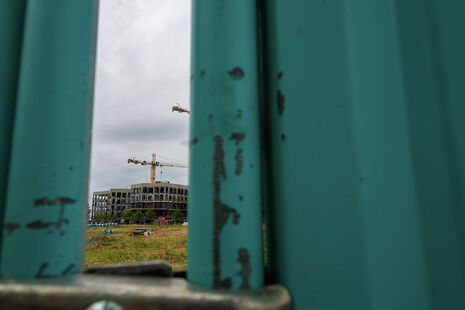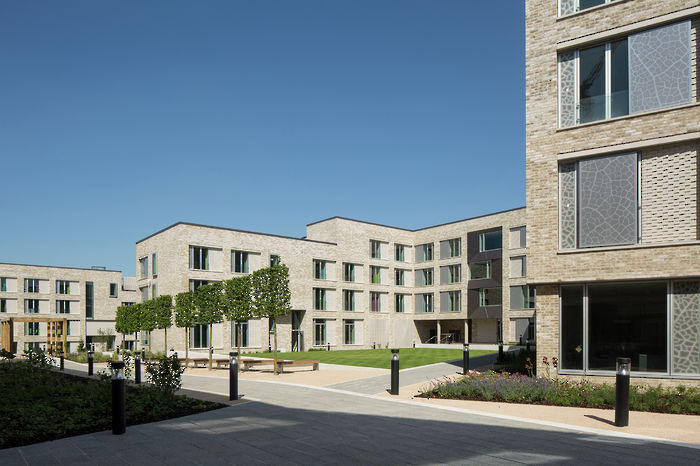Deconstructing Cambridge’s billion-pound debt
The recent £600M bond is intended to help solve Cambridge’s housing crisis, but critics worry disappointing revenue may lead to further marketisation of the University

Cambridge’s role in the national pensions dispute, and its refusal to divest, has centred attention on the University’s finances. Yet one of the most radical changes that occurred within the University this year flew mostly under the radar.
In April, the University received permission from Regent House to arrange £600m of external borrowing to finance income-generating projects. This new bond will bring the University’s long-term balance sheet debt to £936m (19.5% of net assets), having issued an initial £350m bond in 2012.
While the targeted use of these funds is not specified, the lion’s share is expected to be invested in phase two of the North West Cambridge development, if approved in early 2019.
The North West Cambridge development is the largest real estate project ever undertaken by the University, and upon completion will include 3,000 homes, divided between social-rented accommodation and market housing. Phase 2 is projected to cost in the region of £300-£400m, and according to its project director, Heather Topel, will make the University “one of the major developers” in the south of England.
The imperative behind the University’s homebuilding is clear. The town’s booming tech industry, nicknamed ‘Silicon Fen’, has seen average house prices soar to over £500,000. From October 2008 to September 2009, the University Accommodation Service received 6,780 requests for accommodation, with only 360 University units available.
It is clear from the project’s planning application that the University sees such provision as essential to its position on the global stage, as it claims that North West will “provide the living and research accommodation needed to enable the University to grow its research capabilities, and to maintain its world-class research position”.
Already, the University is showing signs of buckling under the pressure to keep its capital projects commercially viable
The University has publicly and privately emphasised its commitment to providing affordable housing for key workers, also touting the environmental credentials of the development. At a meeting of the Finance Committee in July 2016, the committee noted a high level of interest in key worker housing and suggested that Phase 2 could include a greater concentration of key worker housing and fewer student accommodation units.
While Cambridge and Oxford are the only two universities which didn’t see their bond ratings downgraded after the Brexit vote, many are still concerned about the bond’s implications.
Cambridge Defend Education (CDE), a left-wing student campaign group, argues that if, as they predict, the housing development does not generate as much income as hoped for, it will leave “the financial administration stuck with two options, either to increase rents and worsen gentrification, or to increase income elsewhere.”
They claimed that the University’s debt-based financial strategy would be dependent “on mass fee increases both for home and international students, and EU students as a consequence of Brexit, and on increasing income in other areas, potentially with the Mill development or Cambridge Assessment.”
Bond prospectuses – documents which provide detailed information about the bond issuer – outline the most significant liabilities on the issuer’s books. The bond prospectus for the 2018 bond, leaked to Varsity, highlights a number of key liabilities, two of which will be of particular interest to those concerned about the tide of marketisation. The first concerns the fact that the University does not have complete control over the tuition fees that it is able to charge to UK and EU undergraduates, constituting a major constraint on revenue. The second is Cambridge’s role in the current national pensions scheme.
At present, the majority of staff in the higher education sector fund their pensions through a national pensions scheme, the Universities Superannuation Scheme (USS). The scheme operates under a ‘last man standing’ system – if weak institutions become insolvent, the remaining, wealthier employers such as Cambridge, will have to make greater contributions to compensate for the loss.
In responding to a survey calling for employers’ views on the national pensions scheme and proposed reforms, Cambridge expressed a “strong preference” for breaking away from the last man standing scheme currently in place, describing it in its prospectus as “disproportionate risk”.
Cambridge’s tuition fees, too, were identified as a source of risk, as rates of fees for international students are largely determined by market forces. As outlined in the bond’s prospectus, “if [Cambridge] is unable to maintain the current fee levels charged to these groups of students, its fee income may be reduced and this could impact its overall revenue.”
Clément Mouhot, a mathematician and fellow at King’s, said “Behind the bonds of almost £400m in 2012 and now £600m in Cambridge, and even more in Oxford, and behind the rise of tuition fees, lies one and the same logic. That of financialisation and privatisation of universities.”
He added: “In this logic, launching bonds is a natural solution to funding these expansions, and this requires the inhuman financial ‘de-risking’ of universities.
“In this brave new world where universities are managed like hedge funds by 200k+ annual salary managers, the two main ‘risks’ are us: the staff and students.”
Considerations of risk, particularly that posed by funding staff’s pensions, are reflected in discussions between senior finance officials behind the scenes.
A Varsity investigation today reveals senior finance officials attempted to coordinate their responses to the employers’ survey with Oxford, and that some Cambridge colleges wanted to be part of the plan too.
Leaked finance committee meeting minutes from November 2016 reveal discussions of the University’s financial strategy, led by its financial strategy advisory group “highlighting in particular its considerations of the impact of Brexit, of pension risks, and of external borrowing.”
Already, the University is showing signs of buckling under the pressure to keep its capital projects commercially viable. Phase 1 of the North West Cambridge project came under fire for systematic failures leading to significant overspending. The project accumulated additional costs totalling £24.7 million which breached the University’s borrowing limit, arising from a number of late design changes, increases in scope and other factors.
Moving forward, the pressure on the University to generate revenue will only continue to burgeon. In a report to the Council, it was estimated that the likely capital needs of the University for the next 20 years will be around £4bn. As the University grapples with meeting the levels of revenue generation promised to Regent House through their capital projects, questions remain of who will take the fall.
 News / Night Climbers call for Cambridge to cut ties with Israel in new stunt15 April 2024
News / Night Climbers call for Cambridge to cut ties with Israel in new stunt15 April 2024 News / Cambridge University cancer hospital opposed by environmental agency12 April 2024
News / Cambridge University cancer hospital opposed by environmental agency12 April 2024 Features / Cambridge’s first Foundation Year students: where are they now?7 April 2024
Features / Cambridge’s first Foundation Year students: where are they now?7 April 2024 Comment / UK universities are sacrificing widening access for foreign fees11 April 2024
Comment / UK universities are sacrificing widening access for foreign fees11 April 2024 Film & TV / Dune: Part Two is a true epic for the ages11 April 2024
Film & TV / Dune: Part Two is a true epic for the ages11 April 2024




